Waddlemarsh
Posted
Full Member
Somewhere SW of London. Somewhen before today
The station lighting is complete. Eleven Ratio kit lamps (with one spare as a reserve) have been painstakingly drilled, fitted with nanoLEDs, painted, weathered, fitted with SR “target†name signs and wired up.To say I am pleased with the result would be putting it mildly.
There could be more lights but I shall leave it there; the waiting hut has a dummy one outside and none inside and there might be lamps above each platform entry point. But for my purposes this is enough.
All lights are on a single circuit fed from the 12Vdc accessory output on the controller. They are switched using Peco PL-22 switches, the feed runs through a step-down unit to 9V then through a Kytes voltage regulator to 3V. Finally the lamps are wired in twos or threes via a Kytes distributor block.
Add an illuminated Bachmann unit or two and …..
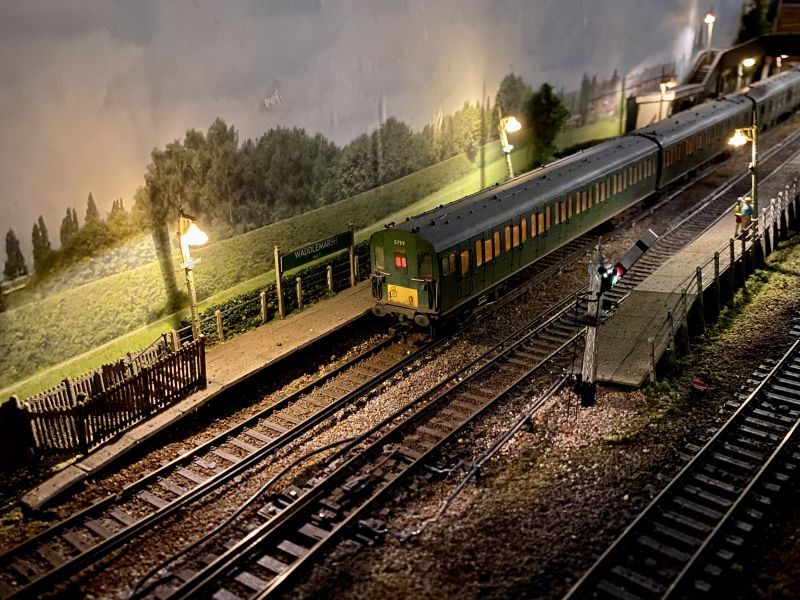
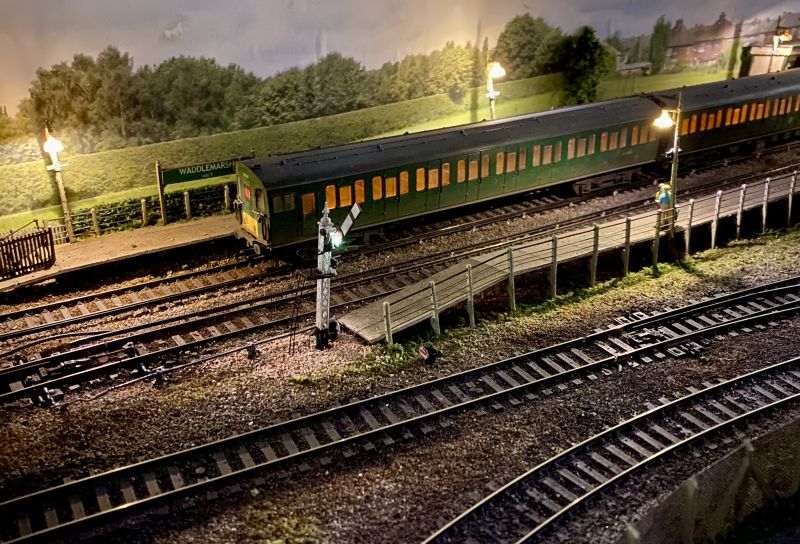

 Last edit: by Gwiwer
Last edit: by Gwiwer
Posted
Full Member
Cheers Pete.
Posted
Full Member
I agree!More nice work.
Cheers,
Claus
www.flickr.com/photos/ellef/
Claus
www.flickr.com/photos/ellef/
Posted
Full Member
If you want to try reducing the intensity of the lights (to represent pools of light) try adding resistors in series. Depending on how you wired the lights (series vs parallel) it should be possible to reduce the intensity of individual lamps. Add a random flasher unit for a failing one. When I was commuting from Ilford to Notting Hill Gate in the 1970s there was a really annoying one at Stratford that never got replaced in the 3 years I was commuting.
Nigel
©Nigel C. Phillips
Posted
Full Member
Digital photography holds the shutter open for long enough to capture what the image processor considers is adequate light without manual intervention. Taking these pictures on the phone means I was not able to alter the effective shutter speed.
If I could get the DSLR camera into the same tight spaces and support it to avoid shake then I could use the shutter priority mode to shorten the exposure length which would show the lights as less intense.
As it is the naked-eye view in a darkened room is rather good; I see the glowing of platform and signal lamps with very little of the background illumination which the pictures show.
There are a couple of spots where I could mount the DSLR on its base or a tripod for a longer shutter-priority view but they would be different viewpoints. Something to try one day.
Posted
Full Member
Phil
Posted
Full Member
Posted
Full Member
Hmmmmm. Is that just a trick of the digital rendition of scaled colour???
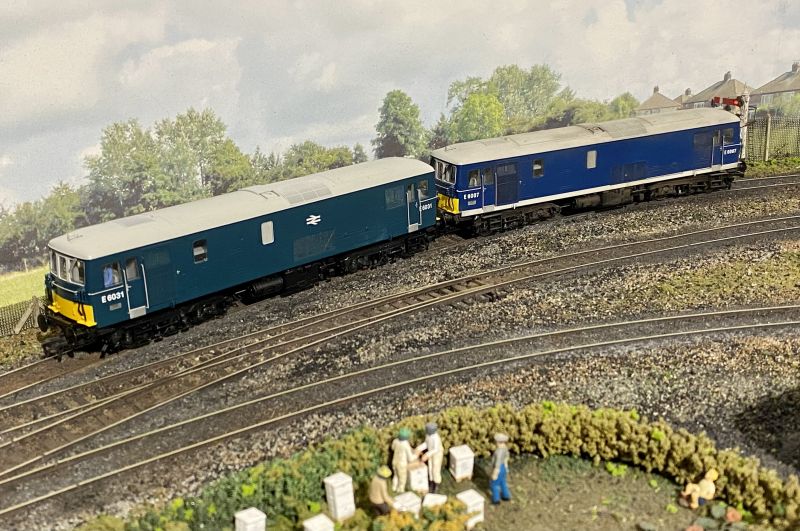
Posted
Full Member
This is the move from the goods yard link via the Down platform to the Up line which creates the need for starting signals from both platforms. The third signal visible is that for the independant goods line.
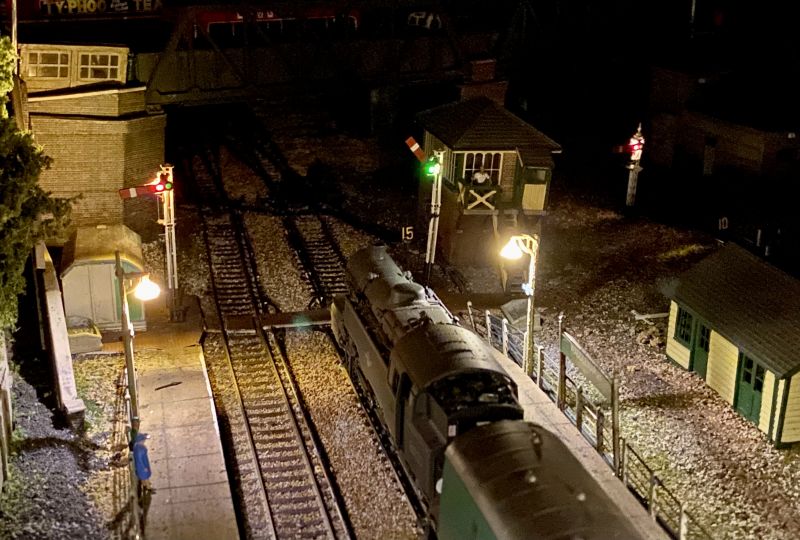
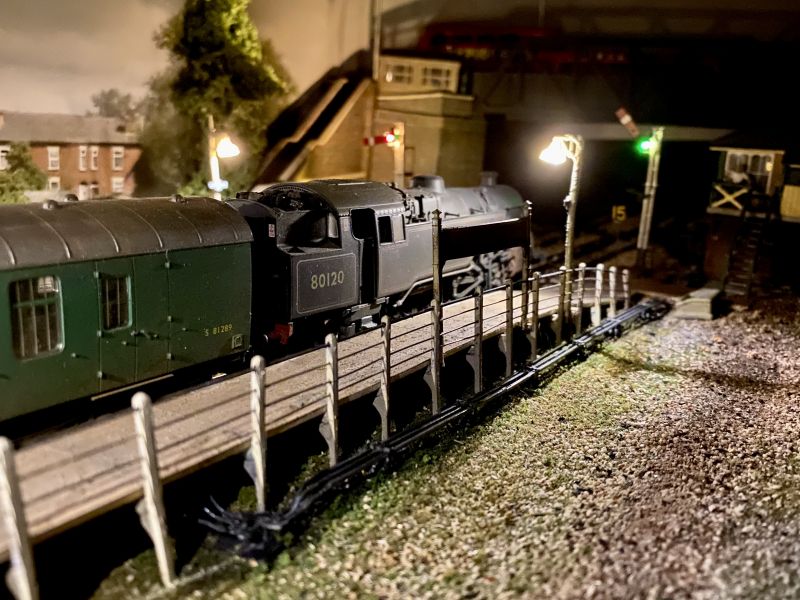
Posted
Full Member
E6031 looks more correct to me. If anything, the early blue on E6007 should be slightly paler than E6031's, but it was not electric blue, which was a much lighter shade again. Neither should have the yellow panels wrapping around the cab corners, although there is a preserved one in the early blue that does have this feature.Two recent arrivals await the road out of the yard returning light engines to, perhaps, Stewarts Lane or Selhurst. Dapol class JB (later class 73) E6007 in early “electric†blue contrasts with classmate E6031 in standard “rail blueâ€. I leave to your opinion which, if either, matches the prototype shade. Looked at singly they both look fine but when together like this they both look slightly wrong.
Hmmmmm. Is that just a trick of the digital rendition of scaled colour???

Jeff Lynn,
Amateur layabout, Professional Lurker, Thread hijacker extraordinaire
Amateur layabout, Professional Lurker, Thread hijacker extraordinaire
Posted
Full Member
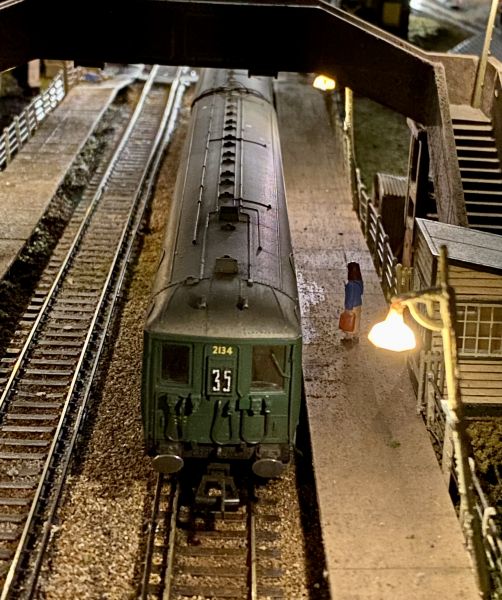
Posted
Full Member
The same sort of odour one got on the dodgem cars at the fair, with Eau de Brake Block thrown in!Pure “Southern Electricâ€. You can almost smell the brakes and that slightly warm “electric aromaâ€. But there’s only one taker for tonight’s evening train from Waddlemarsh Halt.

Lovely photo, Rick. :cool:
Jeff Lynn,
Amateur layabout, Professional Lurker, Thread hijacker extraordinaire
Amateur layabout, Professional Lurker, Thread hijacker extraordinaire
Posted
Site staff

Ed
Posted
Full Member
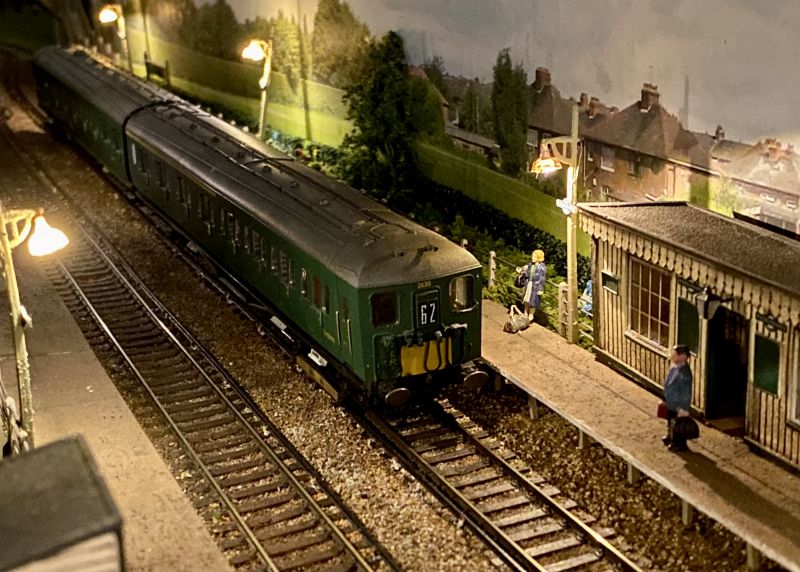
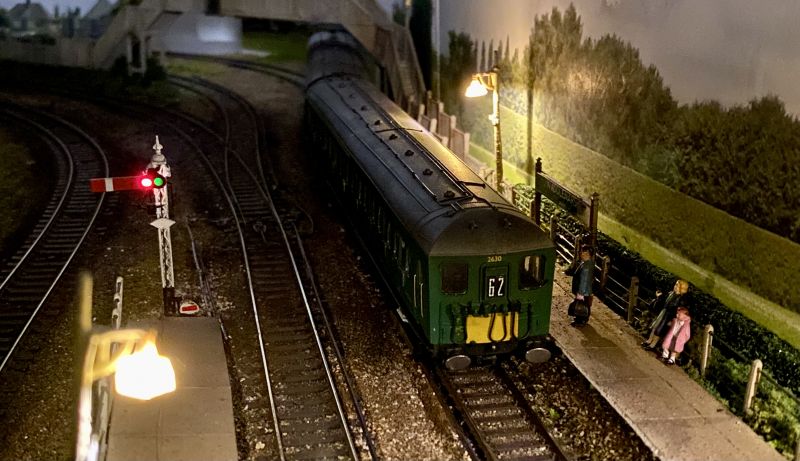
Posted
Full Member
Cheers Pete.
Posted
Full Member
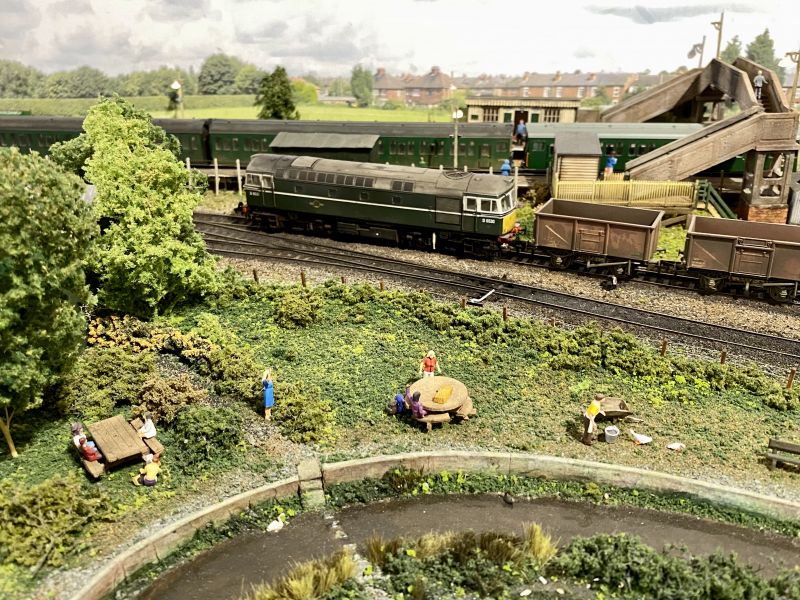
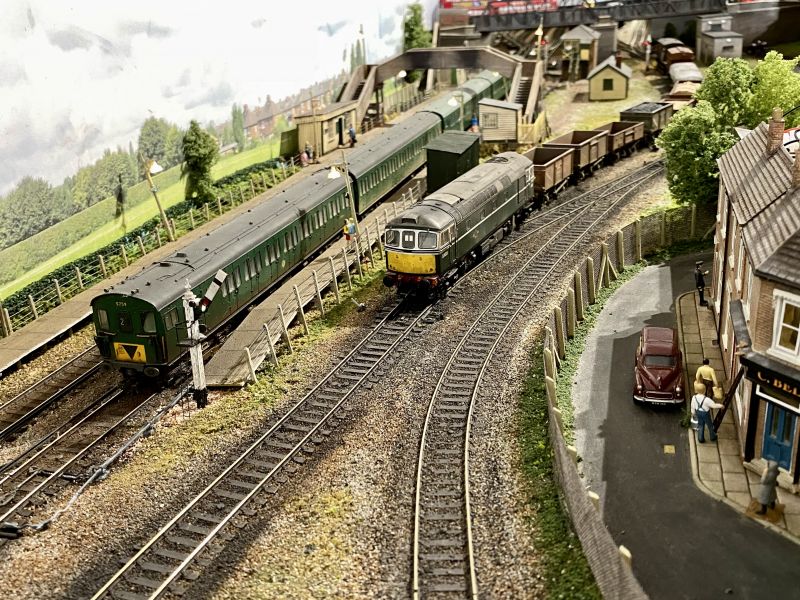
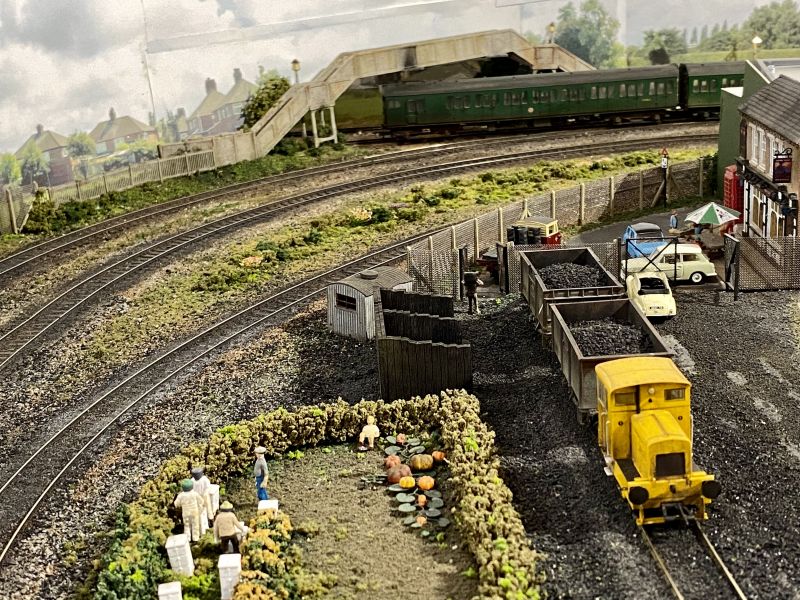

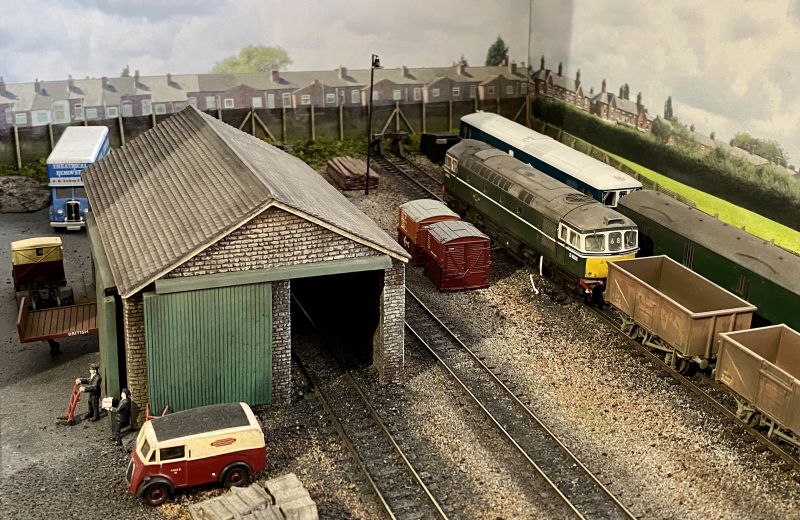
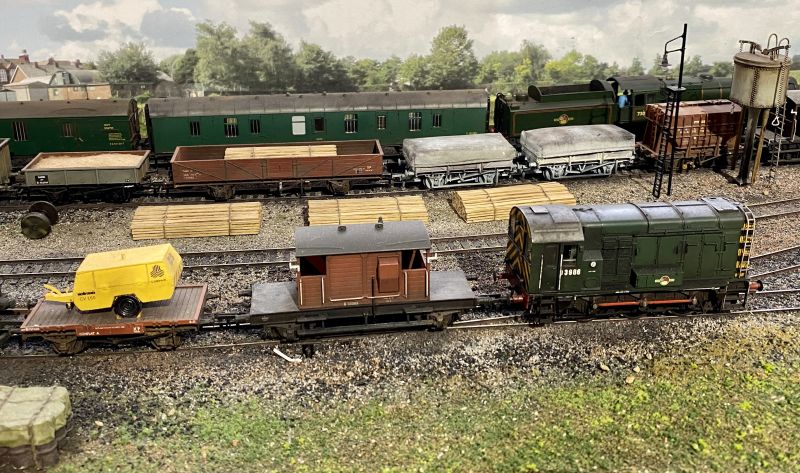
Posted
Full Member
Posted
Full Member
Cheers Pete.
Posted
Full Member
The layout is an L-shape 12 feet by 8 feet and 2 feet wide. Or 3.6 x 2.4 metres and 60 cms wideHow big did you say this layout is, Rick? I know it's tiny compared to your Aussie one, but you've got a wealth of detail in.
Loads of room!
Posted
Full Member
Cheers Pete.
1 guest and 0 members have just viewed this.

